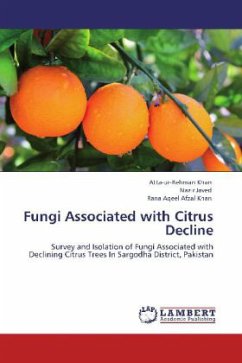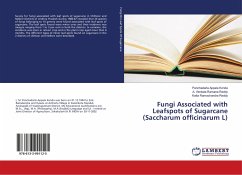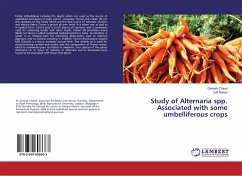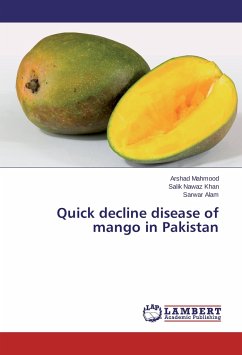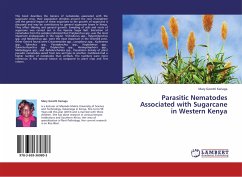A thorough survey of four tehsils of Sargodha District was carried out to investigate the present status of citrus decline in citrus orchards. The maximum fungi (39.52 %) were isolated from the roots followed by the soil (38.86%). The maximum Fusarium spp followed by Aspergillus and Alternaria were isolated from the collected samples of roots and soil from the four tehsils of Sargodha District. The maximum Fusarium spp was isolated from the roots of declining citrus trees from the tehsil Bhalwal (68.57%) followed by the Kot Momin (65.87%), Sillanwali (55.87%) and Sargodha (50.32%). F. solani gave the maximum mycelial growth on the Corn Meal Dextrose Agar medium followed by the Potato Dextrose Agar medium and then Malt Extract Agar medium. The maximum growth of F. solani was observed at pH 6 followed by 5, 4 and 7. While minimum growth was obtained at 3, 8 and 9 pH respectively Toxin studies were also carried out using thin layer chromatography which revealed that F. Solani produces toxins (anhydrofusarubin) which may cause decline in citrus.
Bitte wählen Sie Ihr Anliegen aus.
Rechnungen
Retourenschein anfordern
Bestellstatus
Storno

